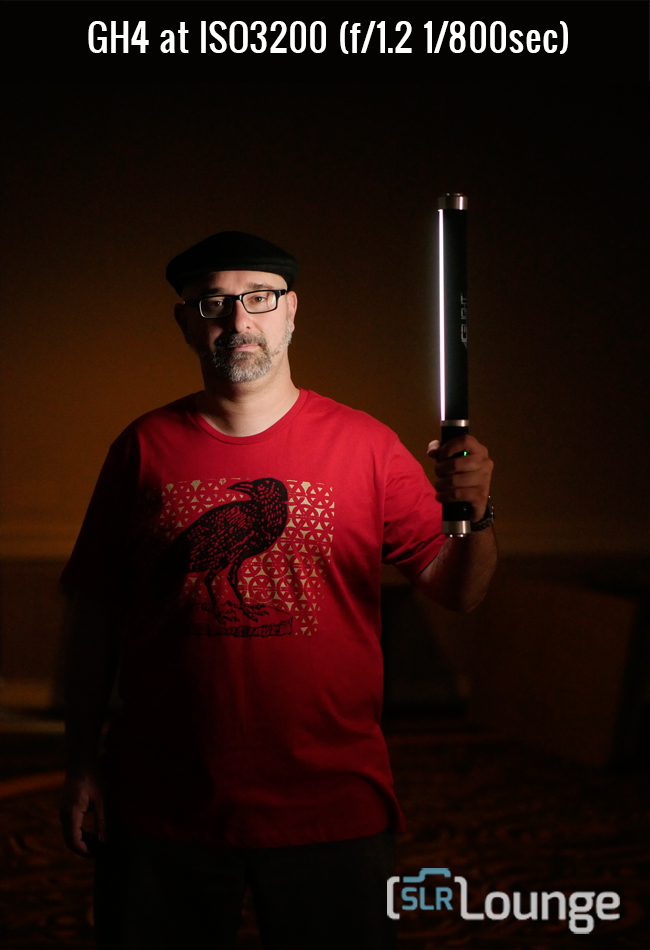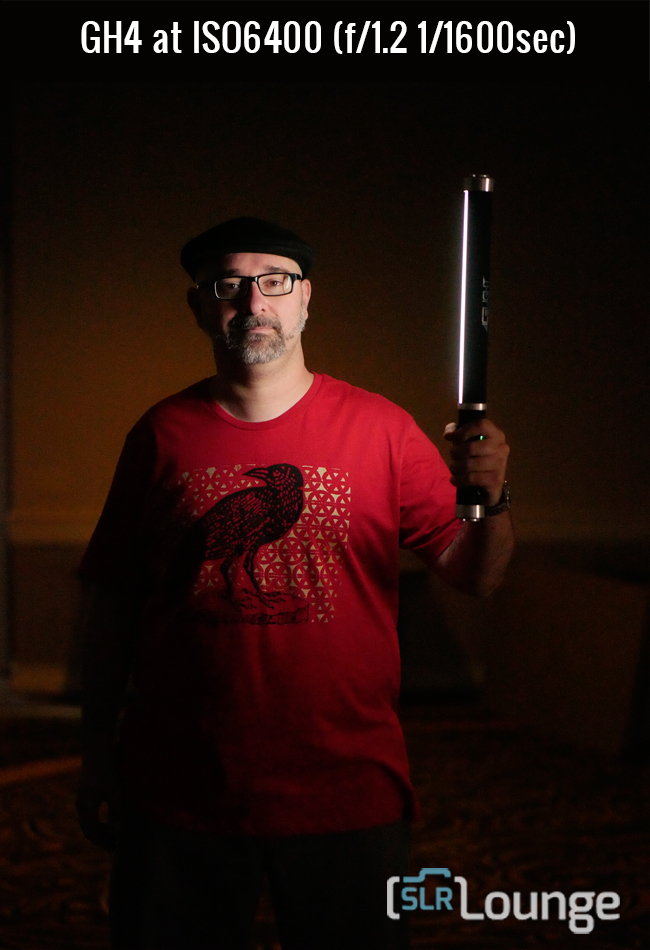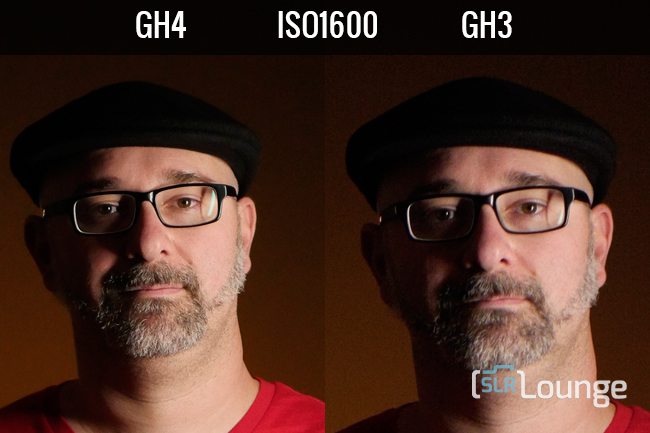
The mirrorless camera race is off to a fast start in 2014. Only several weeks ago, Fuji announced its hotly anticipated XT-1 mirrorless camera. Now, Panasonic has responded with a groundbreaking mirrorless hybrid camera that can capture 16MP and more importantly, record 4K video.

I recently had a chance to use the Panasonic GH4 for about an hour and from my first impression as a GH3 user, Panasonic may have a real winner here. We will cover the video more extensively when we get a review unit for an extended period of time, but in the meantime, here are some takeaways.
[REWIND: Stunning Sample 4K Footage from New Panasonic GH4 Released]
Ergonomics
Other than the GH4 badge, the Panasonic GH4 uses the exact same body and button configuration as the GH3. You can even use the GH3 battery grip with the GH4 since the pins on the bottom are backwards-compatible.
For the most part, this is a really good thing, since Panasonic did a great job with the dial and button placements.
There are a total of 5 physical custom buttons and 6 touchscreen custom buttons, as well as a customizable Quick Menu, so most functions are only 1 or 2 clicks away. The only thing that I wish I can do is use the scroll ring of the lower thumb wheel to control ISO. At least the directional pad can be assigned for Direct Focus, so you can quickly change focus points.
If anything, I would love to have a couple of custom buttons in the front by the lens like the Olympus E-M1 or the Nikon DSLRs, but by in large, ergonomic is a strong point with this camera. In my opinion, it is worth the trade off in larger size compared to other Micro 4/3 cameras.
The Viewfinder and LCD Screen
The two biggest external improvements with the Panasonic GH4 over the GH3 are the electronic viewfinder (EVF) and the LCD screen. Anyone who has been using the GH3 are familiar with the smearing issues of its EVF and luckily, Panasonic has installed a new 2.36M (1024×768 resolution) EVF that is not only smear-free, but also refreshes much faster so you won’t have to worry about tearing or stuttering issues. It is pretty much in line with the Olympus E-M1 and the Sony A7R.
Oh and on top of that, the eye cup is a bit larger and feels much more comfortable.
Panasonic also added a higher resolution OLED LCD screen that not only makes your images and videos look better, but will help you achieve focus much easier and much quicker. Thankfully, Panasonic has finally included focus peaking to the GH-line, which is sorely missing in the GH3.
First Impression of the Panasonic-Leica 42.5mm f/1.2
I did get a chance to shoot with the Panasonic-Leica 42.5mm f/1.2 Nocticron (full frame equivalent 85mm) and let me tell you, this lens is a beauty. It is simply marvelous to shoot with and feels just as well to hold and operate. The aperture ring has a nice, positive click and the focusing ring is dampened well enough. With its sturdy metal body, I have to say that the Pana-Leica 42.5mm has a slightly superior build quality to my favorite micro 4/3 lens, the Olympus 75mm f/1.8.
We will talk about this lens more in-depth in another article, however, so stay tuned.
High ISO Comparison versus the GH3
I didn’t really get much chance to shoot outside as I would like, so I will save that section for the next time we get the GH4, but I did get a chance to do a low light, high ISO comparison test of GH4 versus the GH3.
At the time of this article, Adobe has not released a new version of Adobe Camera RAW that can read the GH4 RAW files, so we will be comparing jpeg to jpeg here.
So to test the low light capability of the GH4, I took a series of quick images of Giulio Sciorio, Mr. Hybrid Photographer extraordinaire and owner of SmallCameraBIGPicture.com. His key light is a Wescott Ice Light.
Finally, following Giulio’s recommendation, the Color profile is set to Standard with everything zeroed out except for Noise Reduction, which is set to its lowest possible settings for both cameras.
ISO1600


Starting from ISO1600, the GH4 already shows a sharper image than the GH3. I’m not sure if it’s because the GH4 focuses better at low light, the f/1.2 aperture, or if the pre-production firmware of the 42.5mm lens is not communicating properly with my GH3, but overall, the images consistently look sharper or more in focus with the GH4 than the GH3.
Other than that, both images have about the same amount of noise.
ISO3200


ISO6400


ISO12,800


Closeup of Giulio’s Head




Closeup of Giulio’s Hand




Closeup of the Bird on the T-Shirt




Conclusion
Overall, there is a clear improvement in the GH4 low light, high ISO performance when it comes to shooting jpegs. So, based on my first impression, Panasonic took what’s great about the GH3, from the ergonomic to the video quality, and improved just about everything. The new sensor produces noticeably better image quality especially in low light, the EVF and LCD are vastly improved, and of course, the headliner is the 4K video output, which we will cover more in-depth in the near future.
Stay tuned for further coverage of the Panasonic GH4!




Get Connected!